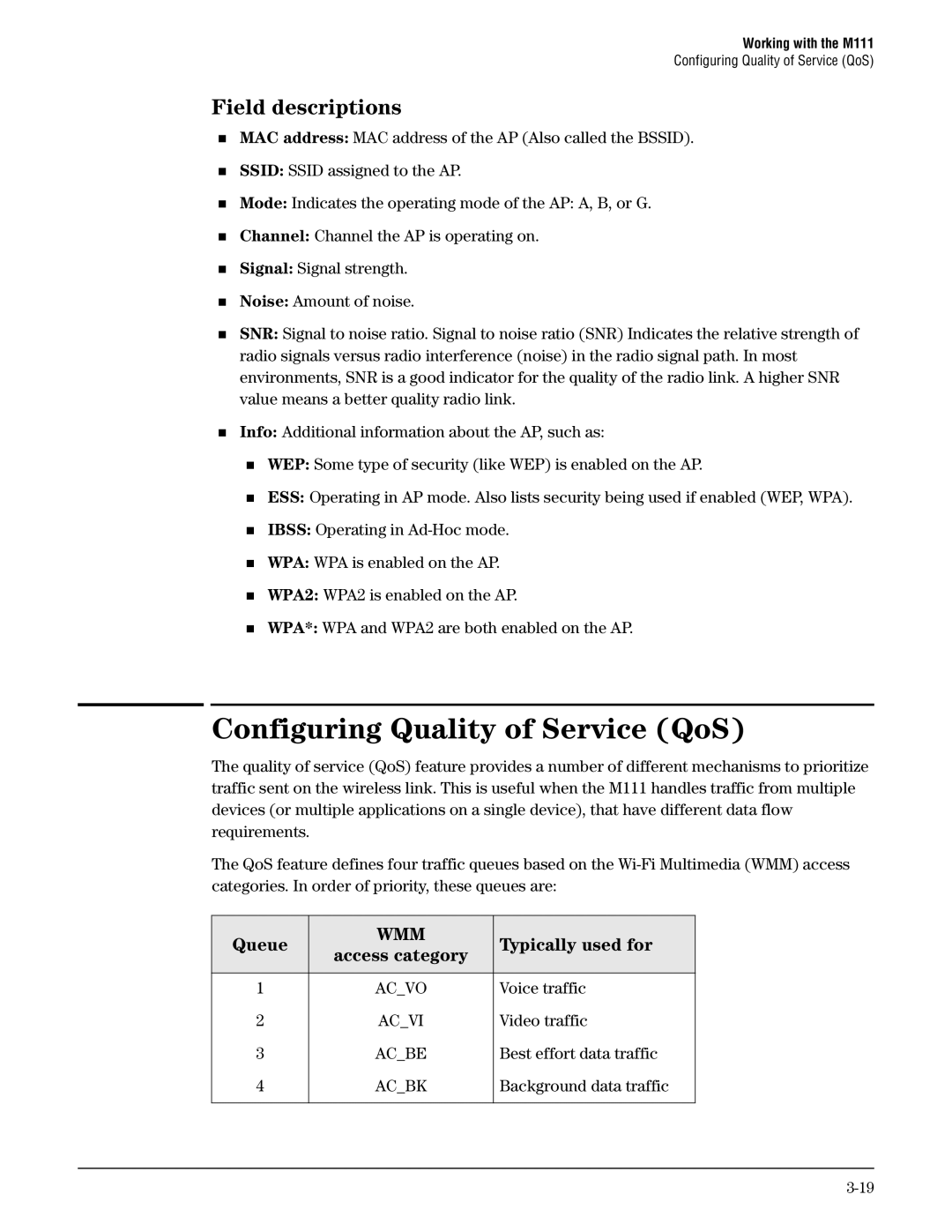
Working with the M111
Configuring Quality of Service (QoS)
Field descriptions
MAC address: MAC address of the AP (Also called the BSSID).
SSID: SSID assigned to the AP.
Mode: Indicates the operating mode of the AP: A, B, or G.
Channel: Channel the AP is operating on.
Signal: Signal strength.
Noise: Amount of noise.
SNR: Signal to noise ratio. Signal to noise ratio (SNR) Indicates the relative strength of radio signals versus radio interference (noise) in the radio signal path. In most environments, SNR is a good indicator for the quality of the radio link. A higher SNR value means a better quality radio link.
Info: Additional information about the AP, such as:
WEP: Some type of security (like WEP) is enabled on the AP.
ESS: Operating in AP mode. Also lists security being used if enabled (WEP, WPA).
IBSS: Operating in
WPA: WPA is enabled on the AP.
WPA2: WPA2 is enabled on the AP.
WPA*: WPA and WPA2 are both enabled on the AP.
Configuring Quality of Service (QoS)
The quality of service (QoS) feature provides a number of different mechanisms to prioritize traffic sent on the wireless link. This is useful when the M111 handles traffic from multiple devices (or multiple applications on a single device), that have different data flow requirements.
The QoS feature defines four traffic queues based on the
Queue | WMM | Typically used for | |
access category | |||
|
| ||
|
|
| |
1 | AC_VO | Voice traffic | |
2 | AC_VI | Video traffic | |
3 | AC_BE | Best effort data traffic | |
4 | AC_BK | Background data traffic | |
|
|
|
